
views
X
Research source
Opting for a Gluten-Free Flour
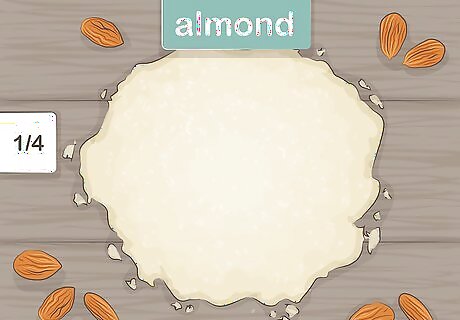
Select almond flour to moisten your baked goods. Almond flour—made from ground-up nuts—contains no gluten. It has a pleasant, nutty taste. It’s best to blend flours when you’re baking with almond flour. Use almond flour for ¼ of the amount of flour called for, and use another gluten-free flour (such as tapioca flour) for ¾ of the called-for amount in order to achieve the right texture. Avoid using 100% almond flour in baked goods, or the quality and consistency of the product may suffer. Since almonds are tough nuts, some grinds of almond flour can be a little gritty. To avoid using a gritty flour, look for a fine-milled flour. Also be aware that nut-based flours have a tendency to brown quickly in the oven. While this won’t alter the flavor of baked goods, it can make them appear overcooked.
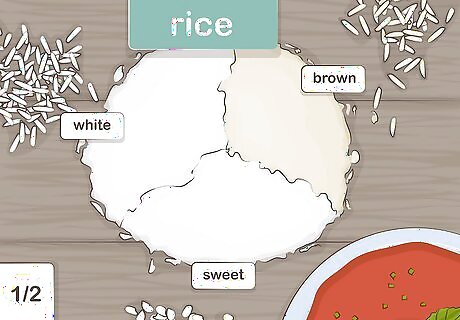
Choose a variety of rice flour for a crumbly, nutty flour. Rice flour is a popular type of gluten-free flour, made from ground up rice. There are 3 varieties of rice flour: white, sweet, and brown. They each have their own benefits. Brown and white rice flour are best for baking: brown has a nutty taste, while white has little flavor and mixes well with other flours. Sweet rice flour is high in starch and works well as a thickening agent in soups or sauces. Avoid using rice flours on their own in recipes, as they tend to be very dry and will cause your baked goods to crumble. Instead, use 1/2 rice flour and 1/2 of another type of gluten-free flour, like bean or quinoa.
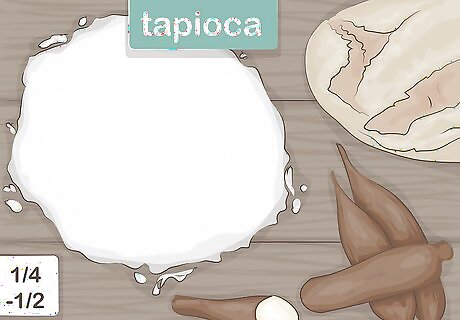
Opt for tapioca flour to create densely-textured baked goods. Tapioca flour is thick and heavy and gives baked goods a slightly chewy texture. Depending on what you’re using the flour for, this can be a desirable trait. For example, some heavy breads (like French breads, Italian breads, or sourdough) would benefit from a chewy texture. If you’re baking with tapioca flour, use it for about ¼ to ½ of your flour blend. Blend it with other fine-grained gluten-free flours like almond flour or quinoa flour. Tapioca also works well as a thickening agent. Add some to gravies, soups, stir-fries, and other sauces to thicken the liquids and add some texture.
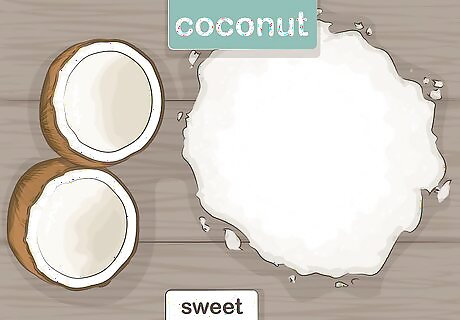
Try coconut flour for a sweet option. Coconut flour isn’t as well known as some other varieties of gluten-free flour, but it’s a great option if you’re looking for a high-fiber, low-carbohydrate option. When you’re baking with coconut flour, you can cut back on the amount of sugar (or other sweetener) that you add to the recipe, since coconut flour is fairly sweet on its own. However, coconut flour is also quite dry. This means that you’ll need to also include more liquids when baking with it. There is no hard-and-fast rule regarding how much more liquid to add when using coconut flour. Experiment with the amount of liquid you add, and find an amount that renders well-textured dough.

Use a bean flour blend for an intense flavor. Bean flours are made from a variety of ground-up types of beans, including garbanzo, navy, pinto, soy, and fava. This gives the flour a rich, complex flavor, which works particularly well in heavy and intensely-flavored baked goods like gingerbread and chocolate cupcakes or brownies. You can bake with a bean flour blend on its own. It also works well when blended with most other gluten-free flours.
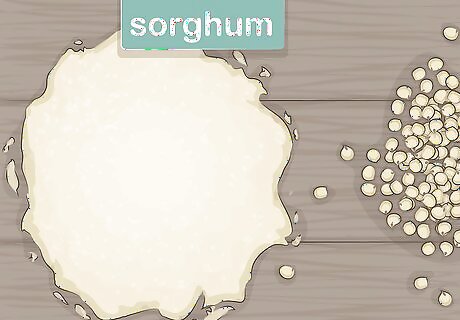
Blend sorghum flour with other gluten-free flours. Sorghum flour is a popular gluten-free flour option. It offers a complex blend and has a great texture that goes well with most types of baked goods. When selecting sorghum flour, pay attention to the color. Lighter brown sorghum flours will have a neutral taste, while darker brown flours will have an earthy taste. Try blending sorghum flour and bean flour together for a tasty mix. Or, blend together sorghum flour with buckwheat flour for a complex flavor.

Bake with quinoa flour for a complete protein package. Quinoa flour is a great option for a healthy gluten-free flour. It contains all 9 of the amino acids and is a complete protein in itself. Quinoa flour comes in 2 varieties: white and red. Red quinoa flour has a deep, rich flavor, making it ideal for hearty, sticky desserts. White quinoa flour is lighter and better suited to desserts that have citrus flavors. The flour itself has a slight almond taste. Like tapioca flour, use quinoa flour for about ¼ of your flour blend. Avoid using quinoa flour as the only flour in a baked good. Blend it with other nutty flours like amaranth or rice flour.
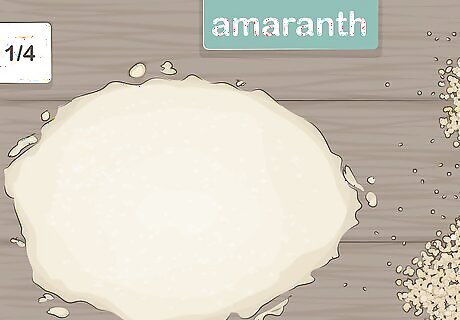
Pick amaranth flour for a high-protein flour. Amaranth is another ancient grain, and its flour is gluten free and contains higher amounts of protein than any other type of gluten-free flour. The flour has a pleasant, nutty flavor, and blends well with most other types of gluten-free flour. When you’re baking with amaranth flour, use it to replace 1/4 of the flour that your recipe calls for. Choose another gluten-free flour, like tapioca, for the other 3/4.
Choosing a Flour with Gluten
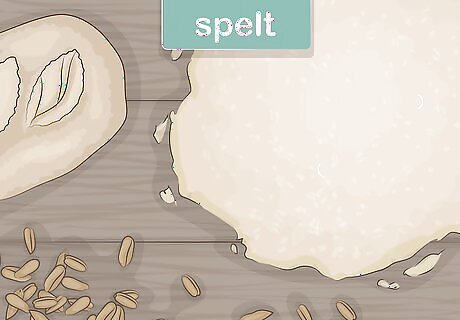
Try spelt flower to sample an ancient grain. While spelt flour does contain gluten, the flour is not derived from wheat. Spelt flour has a higher nutritional content than typical wheat flour, which makes it a great choice when looking for non-wheat flour. Breads and pastas made with spelt flour tend to have a mild, sweet flavor and are slightly more light and airy than similar products made with wheat flour. The fact that spelt flour contains gluten means that it will yield dough with a texture relatively similar to doughs made with wheat flour.
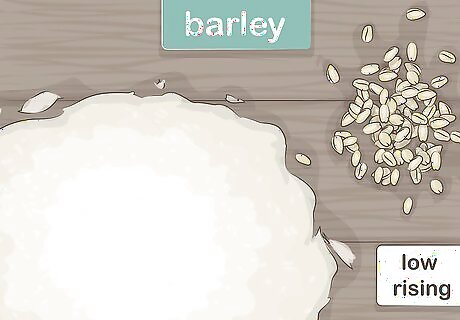
Pick barley flour for a high-fiber alternative flour. Like spelt flour, barley flour contains some gluten, but is also much higher in fiber than wheat flour. More specifically, it contains 3 times the amount of fiber found in all-purpose wheat flour. Barley has a mild, nutty flavor that will enhance whatever baked goods you choose to put it in. Since barley flour contains relatively little gluten, it won’t rise very well. So, avoid using barley flour for lofty loaves of bread, or mix the flour with high-rising all-purpose flour.
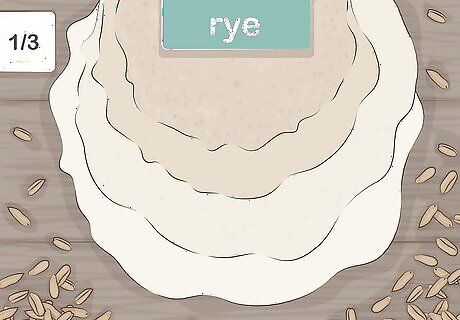
Choose rye flour for a multi-colored, low-gluten option. Unlike other types of flour, rye flour can go through a variety of different milling processes. This means that rye flour can come in various colors. Rye flour also has a very high nutritional value since it retains a large portion of its bran (the nutrient-rich hard outer layer which covers many grains) after milling. Unless you’re particularly partial to rye flour, avoid using 100% rye in recipes. Instead, remove 1/3 of the amount of wheat flour called for in a recipe and replace it with the same amount of rye flour.
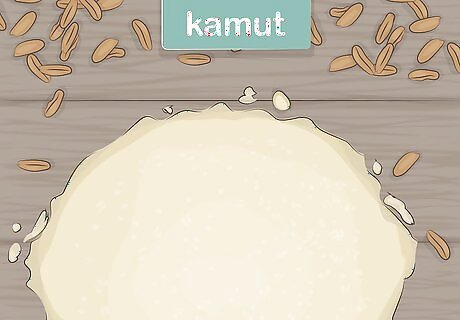
Opt for kamut flour for a sweet, buttery flavor. Kamut flour is nutrient rich and contains a high concentration of minerals. It’s also low in carbs and contains plenty of protein. Unlike many other types of flour, kamut flour has a texture that’s similar to wheat flour. So, you can completely replace wheat flour with kamut flour, instead of having to blend kamut in with other types of flour. Like spelt, kamut is also an ancient grain. This means that these grains haven’t been substantially changed by grain breeding practices in modern times.




















Comments
0 comment